BPMN stands for Business Process Modeling Notation. BPMN is very similar to the concept of flowcharting that has been around since the 1980s. Like flowcharting BPMN modeling has the aim of allowing a person to map a workflow in such a way that it can be understood easily by other interested parties.

BPMN is a language, and like any language the purpose is to facilitate communication. BPMN is designed to facilitate communication and understanding of business processes.
BPMN is not software, and it’s not “owned” by a business, but was developed by the OMG (Object Management Group) as a notation standard that can be understood by business analysts, technical developers, and project managers.
BPMN 2.0: What’s New?
BPMN 2.0 has been around for a few years now, and it has several new features and advantages compared to older versions. Versions prior to 2.0 are less consistent, not as technologically mature, and not as amenable to automation. Many diagrams made under older BPMN versions are outdated, and are far more helpful and meaningful when rendered under BPMN 2.0. BPMN 2.0 is the most major revision of BPMN so far, with improvements having been done to both visual BPMN elements and “interior” BPMN elements like semantics.
BPMN 1.2 provides a mapping from a “valid” BPMN diagram to BPEL, such that an engine can execute the process. The 1.2 specification provides only contained verbal descriptions of the graphic notations elements and modeling rules. This leads to misleading and confusions in the translation process.
BPMN 2.0 represents the biggest revision of BPMN since its inception. BPMN 2.0 received a formal definition in the form of a metamodel, that is a precise definition of the constructs and rules needed for creating specific models.
Some of the main changes that the BPMN versions 2.0 brought with them are among others:
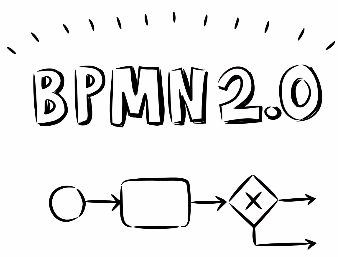
- The addition of a Choreography diagram.
- The addition of a Conversation diagram.
- Non-interrupting Events for a Process.
- Event Sub-processes for a Process.
The major technical changes include:
- A definition of the process execution semantics.
- A formal metamodel as shown through the class diagram figures.
- Interchange formats for abstract syntax model interchange in both XML Metadata
- Interchange (XMI) and XML Schema Definition (XSD).
- Interchange formats for diagram interchange in both XMI and XSD.
- Extensible Stylesheet Language Transformations (XSLT) between the XMI and XSD formats.
Other technical changes include:
- Reference Tasks are removed. These provided reusability within a single diagram, as compared to Global Tasks, which are resuable across multiple diagrams. The new Call Activity can be used to reference a Global Task or another Process to be used within a Process (instead of Reference Tasks).
Because of the version 2.0 updates, the number of elements more than doubled from 55 elements to 116. Many of these new elements were applied to modeling interactions between processes and/or entities, such as the new choreography diagram.
BPMN 2.0.2, released in December 2013, included only minor modifications in terms of typo corrections and a change in clause 15.
Is BPMN 2.0 Tool Complex?
Many critics of BPMN 2.0 complain that BPMN is too complicated to learn. Even if the language itself is designed to be unambiguous by including a singular semantic layer, there are simply too many objects in BPMN for the standard to be useful.
These critics often point to images from the BPMN 2.0 OMG specification such as this matrix of events to emphasize their point. These critics often favor other flavors of modeling tools and methodologies.
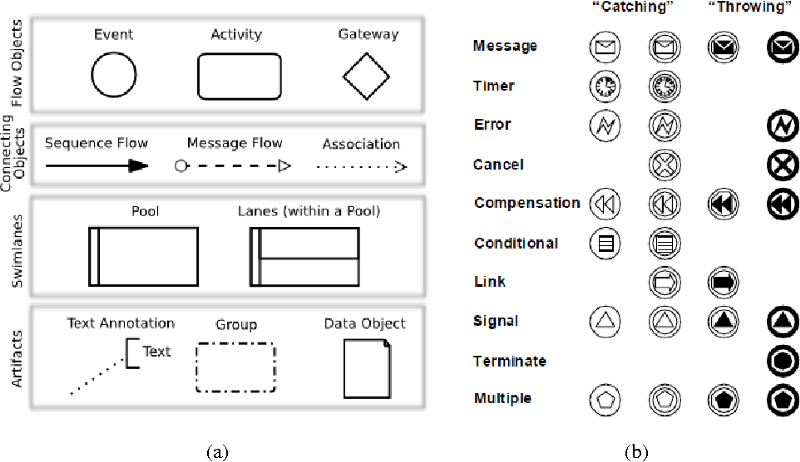
Learning BPMN Notation in an Easier Way
What the critics fail to mention is that most processes do not require the modeler to know the entire specification. In fact, most models don’t use more than a handful of the most common process elements.
In fact, BPMN actually consists of only 3 main elements:
- Events
- Activities
- Gateways
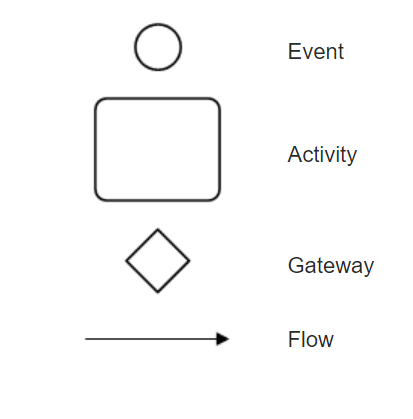
Yes, that’s right. There are just three main elements in BPMN! Ok, well, let’s throw in a fourth element just so we can connect the other three — the Sequence Flow (the black lines with arrows that connect everything together).
Perhaps if you can memorize a set of those most commonly used BPMN core elements, they should be sufficient for most of your problem:
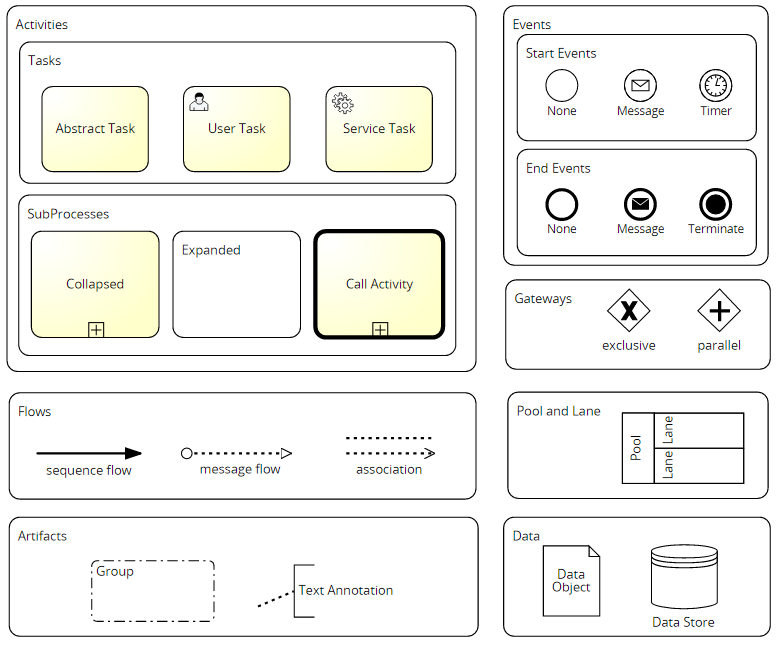
BPMN Learn By Example
As some critics says, BPMN got quite a few symbols and notation. It is not so easy to memorize them all.At first, we should use the basic core set of BPMN elements, and gradually we learn more as we come across more and more problems. The best way to grasp the meaning of them is learning them by examples and patterns.
Here I provide a few BPMN examples for you as a starting point and wish you all the best for your exploration journey.
This business process diagram example illustrates a process of a Business Department to Human Resources starting with reporting a job opening and finishing with posting the job advert which includes flows, tasks, start and end events and gateways.
Business Process Diagram Example: Job Posting
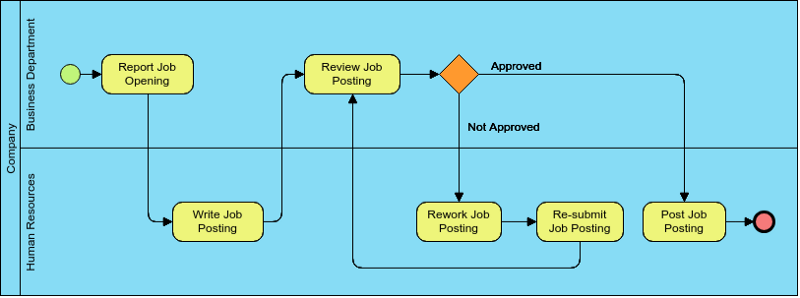
Business Process Diagram Example: Vendor Management System
This is a BPMN process diagram for vendor management. It shows a to-be purchasing process for creating new Vendors. This BPM shows multiple tasks, gateways (decisions) and connectors.

Business Process Diagram Example: Request of Quote
This is a BPD example that describe a process for a request for a quote. It shows activities, an event for a time out and a marker showing in the sub-process loops.
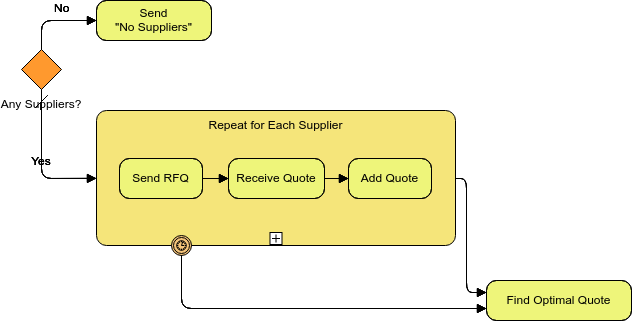
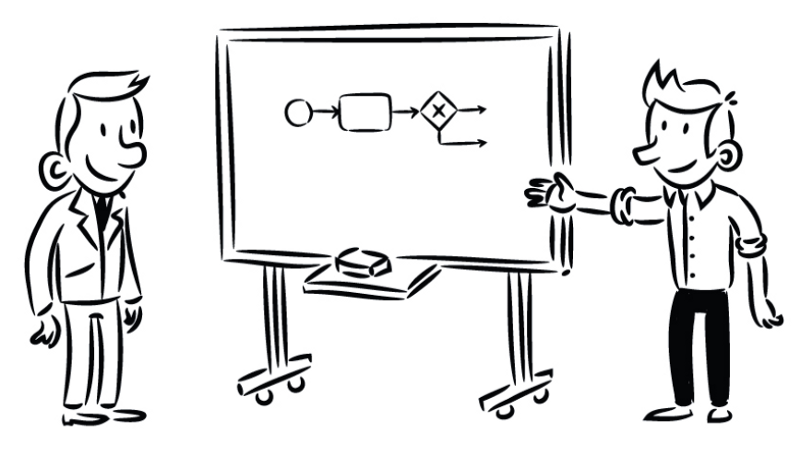
This post is also available in Deutsch, Español, فارسی, Français, Bahasa Indonesia, 日本語, Polski, Portuguese, Ру́сский, Việt Nam, 简体中文 and 繁體中文.













